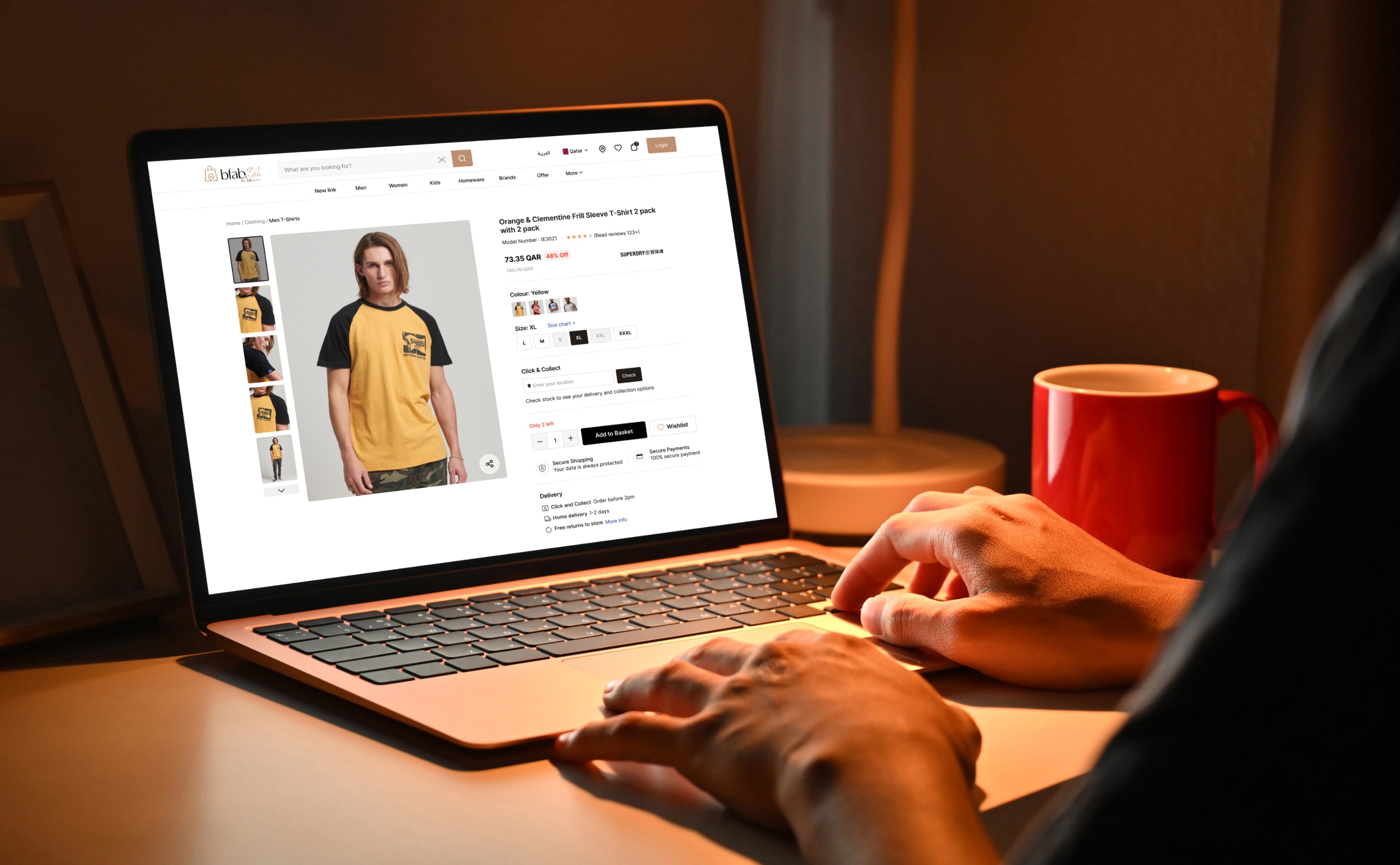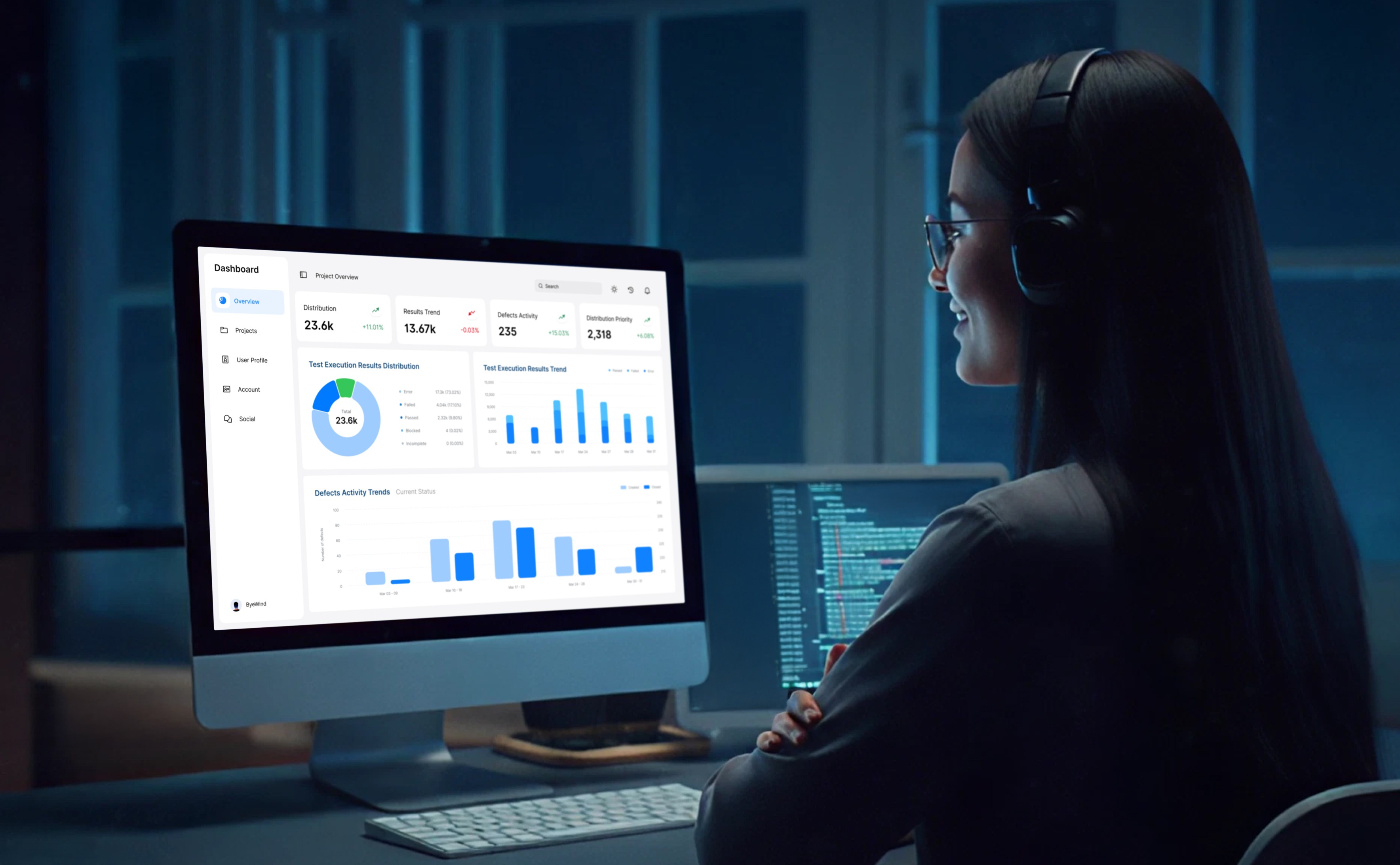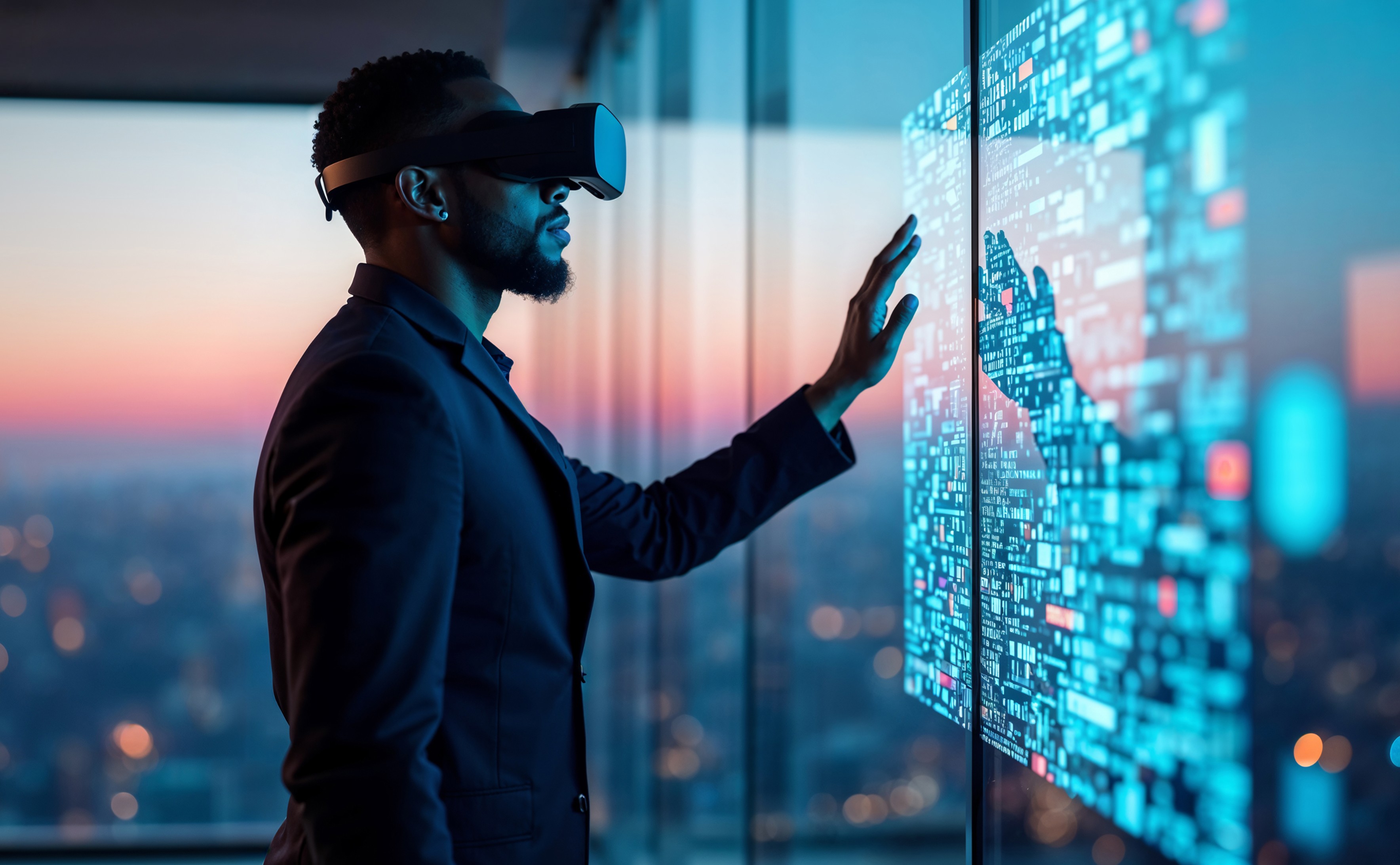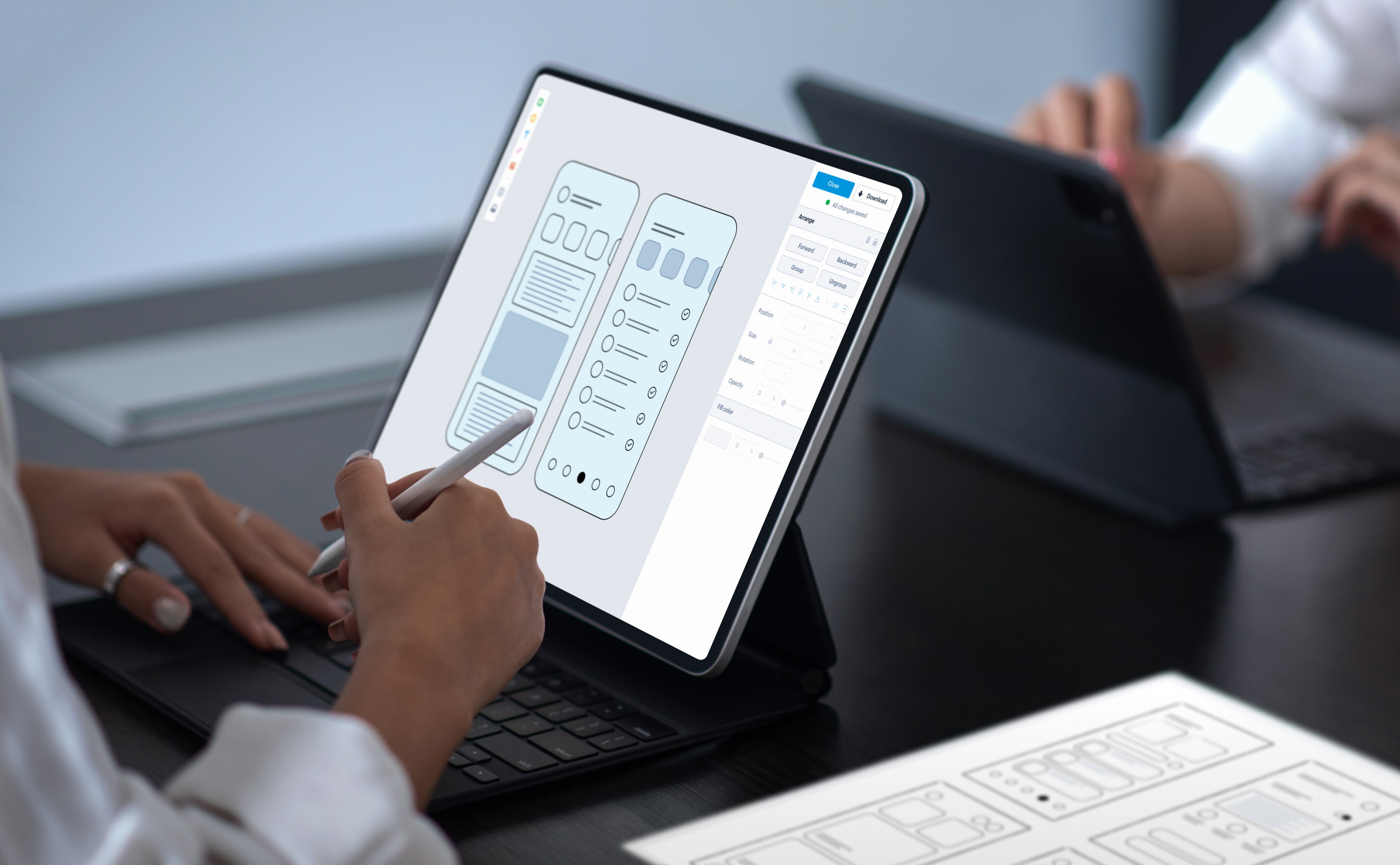E-commerce Trends That Are Powering Online Retail Forward In 2025

E-commerce has bolstered the purchasing power of customers with improved convenience, cost-effectiveness, and accessibility. The e-commerce industry has been undergoing significant changes influenced by the customers’ inclination toward buying online. Forecasts indicate that the online segment could wrap up a quarter or close to the global retail sales by 2027. Internet sales have taken a significant surge in retailing, thus alerting businesses to stay updated on emerging e-commerce trends.
The e-commerce industry has transformed the entire retail segment, making shopping easier to meet the ever-evolving customer’s needs. Even the largest global retailers have been encouraged to go online; in certain cases, they have even opted for the D2C (direct-to-consumer) model, eliminating middlemen, minimizing cost to consumers, and scaling ROI for the brand.
With more businessmen and owners leaping into the e-commerce arena, they must depend on modern technological trends to stay ahead of the competition for exponential growth. In this blog, we shall discuss some of the biggest trends in e-commerce for 2025 you can expect to witness and be prepared for. Let’s lace up and get ready to win the e-commerce race with a comprehensive understanding of the innovations that will light up your business when followed to thrive in the online marketplace.
Ready to integrate a chatbot into your business?
Let's talkLoading...
E-commerce trends that will bloom in 2025 and beyond
1. AI-Driven Personalisation to Lay the New Standard
AI was quite more happening in 2024 — it has suddenly popped up in every corner of the world. Generative AI has particularly merged into our everyday lives. The e-commerce market is expected to meet a CAGR of 15.5% over 2024-2034. As AI traverses from the technology trend to the mainstream, it will lay a pillar of successful e-commerce storefront strategies this year. Brands will use AI to boost their personalization efforts in 2025 for the following:
- To facilitate real-time shopping recommendations and social commerce
- To improve product searches with images
- To ensure product suggestions and customer service using chatbots
- To boost the return process
- To implement business-to-agent commerce
Sephora uses chatbots to offer personalized beauty product recommendations. Also, the Salesforce Commerce Cloud uses ‘Einstein AI’ to build predictive insights and provide personalized product suggestions. All of these are examples of this evolving standard.
2. Augmented Reality and Virtual Reality to Scale User Experiences
Statistics say AR e-commerce experiences are 200% more engaging than their non-AR counterparts. AR and VR have been significantly capable of bridging the gap between offline and online shopping. Incorporating AR and VR into your e-commerce platform can improve brand presence and boost conversions. Here is a list of benefits the technology can offer to your business:
- Interactive product demonstrations boost engagement and brand credibility.
- Minimises hesitation in purchases through offering a virtual try-before-you-buy experience.
- Enable customers to visualize products wherever they are, thus minimizing returns.
- AR-enabled fitting rooms for virtual try-ons.
- VR-powered tours offer an immersive experience for real estate, travel, and many related industries to improve sales.
IKEA is an example to quote, letting shoppers view the furniture at home. The app enables users to scan the room, retrieve dimensions, and visualize how the furniture fits the room with maximum accuracy.
3. Chatbots to Build Customer Interactions
AI-powered chatbots replace the in-store salesperson interaction. This works best whenever customers become frustrated and can’t purchase the products for a while. Chatbots help in customer support and improve customer experience. E-commerce stores have witnessed the exceptional contribution of bots in enhanced customer support, anticipating the items they would be interested in.
Toyota used Stella, a chatbot solution, to gather the preferences of interlocutors based on a pleasant chat conversation. Based on the details, the bot assigns users to the relevant team members on live chat. Consequently, those conversations led to brochure inquiries, test drive scheduling, etc.
4. Voice Search to Boost Online Sales
NLP (Natural Language Processing) and voice recognition techniques help understand and quickly respond to users’ queries. You can make ordering and browsing smoother with tools such as Voice Commerce, Google Assistant, and Alexa. You can also shop and reorder products with the help of voice commands.
Features like natural language interactions and hands-free shopping improve with customers turning over to voice commerce-based purchases in the future. Voice commerce is profound in the clothing and grocery industry due to its effortless reordering capabilities. With Google Assistant supporting more than 40 languages spanning over 80 countries, Voice Commerce is evolving with an appreciable improvement.
5. Omnichannel Experience to Increase Customer Engagement
Channels are different venues that help your brand interact with the customers. With an omnichannel approach, you can integrate the channels to improve CX (customer experience). This urges customers to engage with your brand efficiently, irrespective of the medium. When a buyer sees your product in a social media advertisement and wishes to browse the store’s website on mobile, if they switch this to the desktop, everything remains there with no need to start over. It encourages them to pull up the product details on their mobile, use live chat, or move to the final purchase offline. The omnichannel experience keeps customers engaged and triggers conversions from discovery to checkout.
A striking example is Sephora Beauty Insiders: the Beauty Bag on their desktop or phones, offering access to huge amounts of data. Buyers can shop, view their favorites, past purchases, and the reward points, scan items in-store for options, watch tutorial videos, and locate a store near them.
Ready to deliver a seamless omnichannel experience?
Reach out to usLoading...
6. AI Agents for E-commerce & Retail
AI bots browse massive amounts of data to learn customer behavior, search history, purchase history, and customer needs. They use this data to build highly personalized buying experiences for each user. AI agents can offer intelligent recommendations. They leverage various Machine Learning algorithms to detect patterns and customer interactions, enabling recommendations of the ideal products to the customers based on their choices and interests.
Product prices could be changed for many reasons, including real-time market conditions, rival pricing, and product demand. The agents would evaluate pricing information and market trends to make better decisions on pricing and optimize the overall profit.
7. Headless & Composable Commerce for Efficient Shopping
Headless e-commerce architecture works based on decoupling the frontend and backend systems with the freedom to innovate and experiment with novel technologies and channels without impacting user experience. With headless commerce, you can adapt to the changing market dynamics swiftly.
Imagine including a new payment option for customers and knowing that you need to re-write a huge chunk of the website for the feature. With composable commerce, businesses could flexibly customize the tech stack based on their needs. You can choose the best services and tools aligned with each operation, which range from customer engagement to inventory management, ensuring the shopping experience is efficient and well-tailored.
Nike, for example, wanted a mobile-first e-commerce website to increase sales from the mobile-using consumer niche. This demanded optimizing every element, including the CTA (call to action) and visuals that fit on the smaller screens. They used React SPA and Node.js backend for frontend (BFF) to optimize experiences across every page.
8. Supply Chain & Logistics Optimisation
The speed and efficiency of e-commerce operations are proportional to supply chain advancements. Integrating technologies like automation, AI, drones, and logistics is becoming speedy, precise, and largely sustainable. This lets businesses meet customer requirements for quick, eco-friendly, and reliable delivery options.
For instance, AI-driven demand forecasting helps machine learning models analyze huge amounts of seasonal patterns, sales-related information, and external factors like weather to enable demand predictions. This scales inventory management, minimizes overstock/understock, and reduces wastage. Drone delivery services are expected to be more common this year in urban areas, focusing on faster delivery and lower carbon emissions. As per the reports, the market for drone packages is expected to grow by $38.5 bn by 2034.
9. Cross-Border Commerce for Globalised Operations
Globalization has made the mobility of people across the globe easier. The choice of procuring goods also crosses from local markets to businesses transcending borders. Letting your online business hit global customers and enabling them to transact from anywhere globally is a prevailing e-commerce trend. Businesses should implement accurate currency exchange, feasible transportation, marketing campaigns, and voice commerce with local languages.
The workforce and customers should be educated about the tax regime and the return policies that fall under the region where the purchases are made. Restrictions and exemptions to sell particular products should be taken care of. Give your e-commerce business the capability to align with cross-border commerce needs and attract customers worldwide.
10. Sustainable Online Shopping to Embrace Business Values
Based on the McKinsey survey, consumer responses indicate that 85% have shifted their buying behavior towards being more sustainable in recent years. With more attention to environmental consciousness, consumers are seeking out brands that prioritize ethical practices and sustainability. Managing sustainable practices saves the planet and improves customer loyalty and brand reputation.
Some brand strategies include eco-friendly packaging, partnerships with sustainable brands, transparency about sustainable practices, and product eco-labeling. Consider Ikea, popular for its commitment to sustainable practices and bringing down climate footprint to 24% while scaling revenue by more than 30%.
11. Predictive Inventory to Enable Forecasting
Effective inventory management is essential in meeting customer demand while minimizing waste. Predictive analytics lets brands anticipate trends and proactively adjust stock levels. For instance, a heavy machinery client can predict when a customer would require replacing a machine or execute maintenance, ensuring proactive sale of used equipment, identification of buyers, and closing deals. Also, they can incentivize maintenance and parts purchases at the right time while predicting revenue opportunities, thus maximizing the business impact.
A core example of a brand that leverages predictive inventory management is Amazon, using advanced algorithms and machine learning for efficient product demand forecasting, stock level optimization, and effective supply chain management. It helps them predict those products with high demand at particular times and locations according to the historical sales data, market trends, seasonality, etc., ideally reducing stockouts and overstocking circumstances.
12. Focus on Customer Trust & Data Security
With growing personalization, the need for data security has also been geared up. Customers want to ensure that their information is safe. As the expectations for data security keep increasing, brands have to be keen on adopting rigorous protocols to maintain trust.
PwC survey of 2024 revealed that about 60% of consumers would refrain from buying from a brand after a data breach, underscoring the increased stakes of data protection. Following standards such as PCI DSS and SOC Type 1 and 2 can help companies minimize the risks arising from breaches. It helps reassure customers that their data is handled with maximum care.
13. Subscription E-commerce Models for Consistent Revenue Streams
Subscription models are expected to become highly flexible to meet the consumers’ requirements that underline personalization and convenience as online retailers adopt the technology to refine subscriptions. It is predicted that the global e-commerce subscription market size will reach $904.28 billion by 2026.
As consumers expect something beyond regular deliveries, companies will continue creating models beyond fixed monthly boxes and introduce flexible subscriptions—making it easier to swap products, get personalized recommendations based on purchase history, and modify delivery frequencies. Apple has many subscription service examples to mention. From the popular Apple TV streaming service to Apple Fitness and Apple News, the brand has built consistent revenue streams with a subscription e-commerce model.
14. Social Commerce to Reach Wider Audiences
Social media is a doorway to revive product discovery and shopping. Social commerce is estimated to hop to a 13.7% CAGR from 2023 to 2028, with revenues forecasted to surpass one trillion dollars by 2028. With more than 54.7 M+ followers on Instagram, Huda Beauty collaborates with makeup artists, influencers, and celebrities who endorse their beauty products.
The partnership has been key in enhancing the brand’s credibility to reach a wide range of audience. The brand has built a completely shoppable social content feed with products tagged and has the feature integrated into the product and home pages.
15. Buy Now, Pay Later (BNPL)
BNPL refers to short-term financing that lets customers make purchases and pay for the items later with regular interest-free installments. It enables consumers to split the purchase costs and follow the payment schedule in installments. However, they don’t have to pay any fee or interest.
BNPL's customer base for online retail was 5 million in 2021 and is expected to hit 30 million by the end of 2026, says Statista. With the new generation going for this trend rather than using conventional credit cards, the BNPL method is expected to grow substantially and take the next hot seat. Big brands like Charlotte Tilbury (makeup brand) have already integrated BNPL providers into their user journeys with the ‘Buy now, pay in three installments’ policy.
Final Thoughts
The e-commerce industry has grown at an incredible pace and has reshaped the retail industry. We hope the blog has helped you understand the digital commerce trends and has helped you get prepared for whatever comes your way toward e-commerce business success. Adapting to the changing online retail trends and staying competitive in this evolving marketplace is important. By prioritizing innovation and collaborating with a reliable ecommerce development agency, you can foster your e-commerce business growth and meet the expectations of your consumer base.
With expertise in addressing the e-commerce development services needs, WAC has been at the forefront with the right set of strategies for your business based on emerging trends. Our expertise relies on providing advanced solutions and expertise in managing e-commerce platforms such as Adobe Commerce, Magento, Shopify, WooCommerce, and Salesforce for the best experience and positioning your business for ultimate success. If you're looking to scale your team or need platform-specific expertise, you can hire eCommerce developers from WAC to support your goals. To know more about the e-commerce consulting and development services we offer, let’s talk today!
Curious how these trends can elevate your brand?
Let's talkLoading...
- E-Commerce Statistics 2025: Key Trends, Growth Insights & Global Shopping Behavior
- Top Gen Z Shopping Trends Shaping eCommerce in 2025
- Adobe Commerce vs Commercetools: Choosing the Right eCommerce Platform for Scalable Success
- Composable Commerce in 2025: A Mainstream Solution for the Future of Retail
- Headless vs. Modular Commerce: Deciding the Best Fit For Your Business
Discover Digital Transformation
Please feel free to share your thoughts and we can discuss it over a cup of tea.










